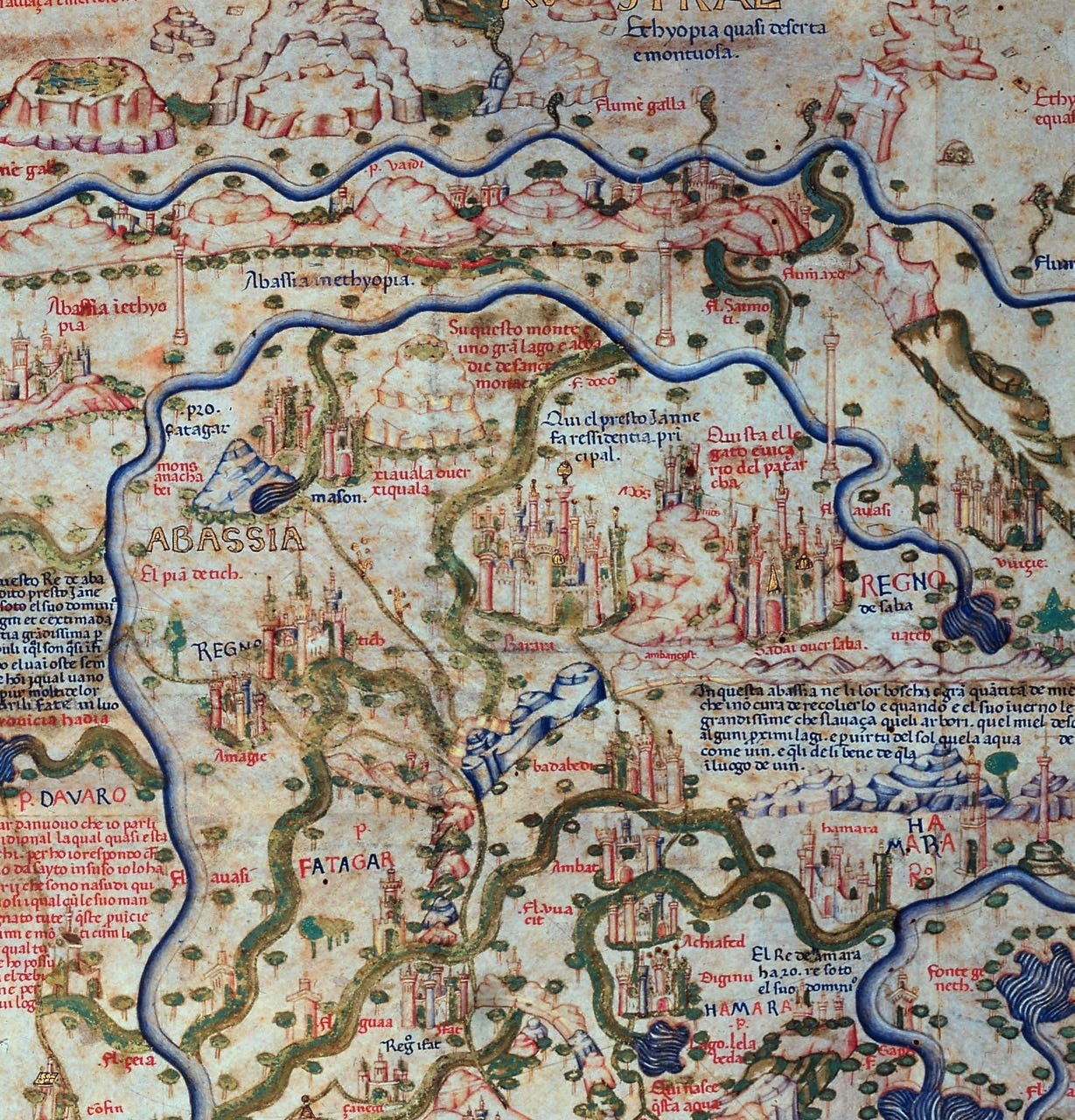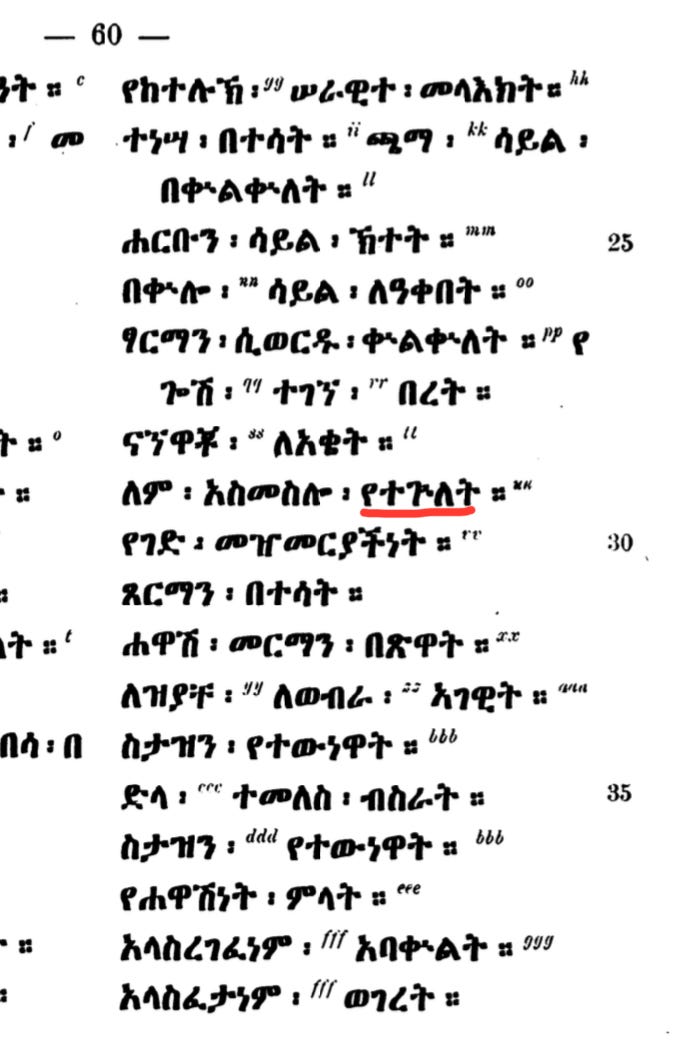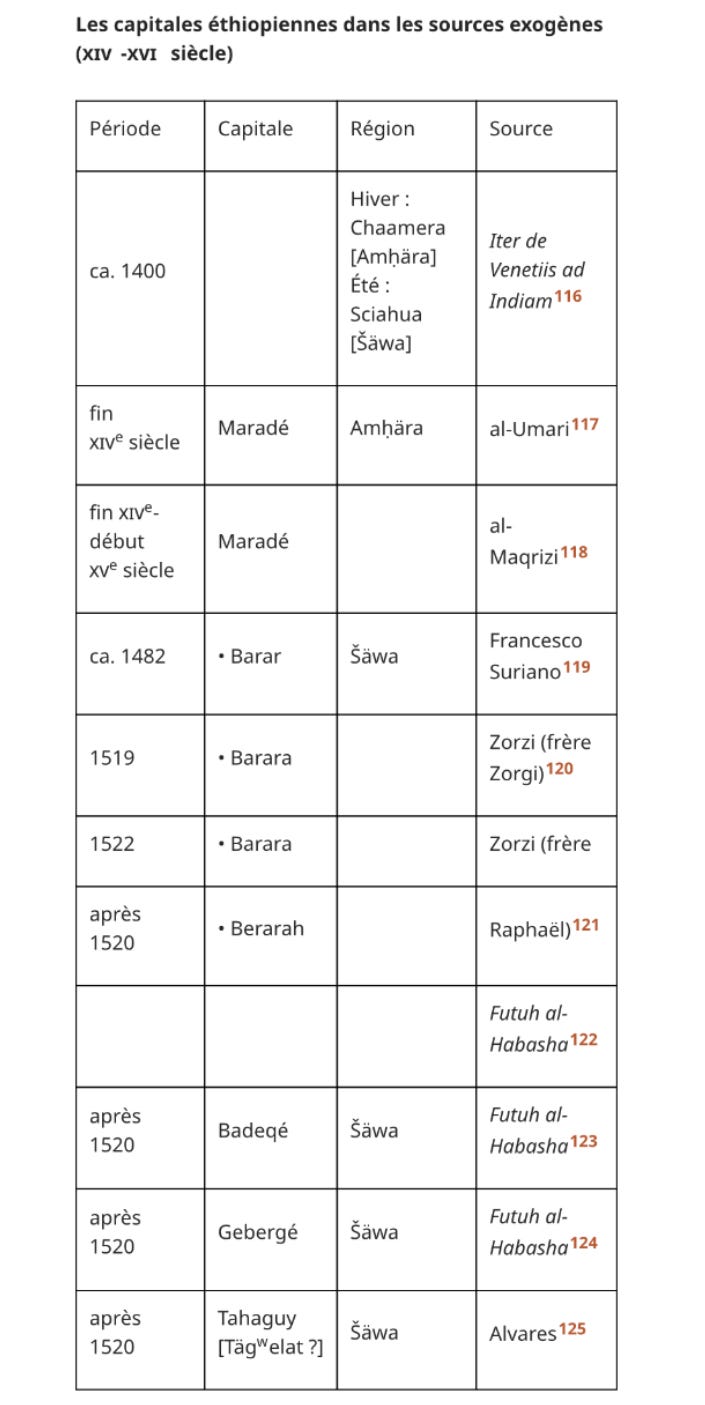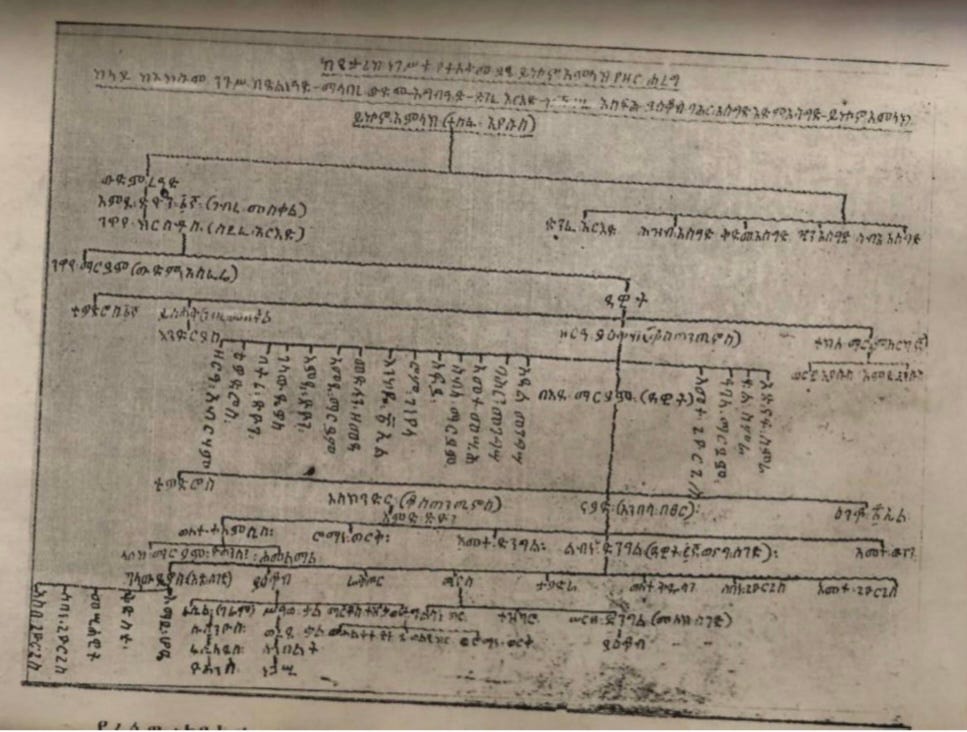Some Oromo nationalists have insinuated that the former name of Addis Ababa (Amharic: አዲስ አበባ) was “Finfinne” in Orominya. However, this claim yields two errors.
First, “finfinne” is originally an Amharic word, meaning “hot spring.” While the formal Amharic term is ፍል ውሃ (“fil weha”), when something (like water) springs out of a source, Amharas say ፊን አለ (“fin ale”) or (with exaggeration) ፊን ፊን አለ (“fin fin ale”). At some point, Oromos heard this Amharic expression and deceptively applied it as a name to Addis Ababa, bringing us to point two.
The ancient city was only renamed “Addis Ababa” in 1897 by the Amhara Emperor Menelik II, after HIM reclaimed the land of their ancestors.
Before that, Addis Ababa was called በራራ (“Barara”). According to archaeologist Samuel Walker, who visited the site in 2019, Barara is a portmanteau of the Amharic words for “door” (በር / “bar”) and the nearby Mt. Yerrar, colloquially called አራ (“Ara”).
In Ethiopian sources, Barara may be first attested in a late 15th century Ge’ez manuscript about a miracle of Mary in the Amhara Kingdom of Shewa.
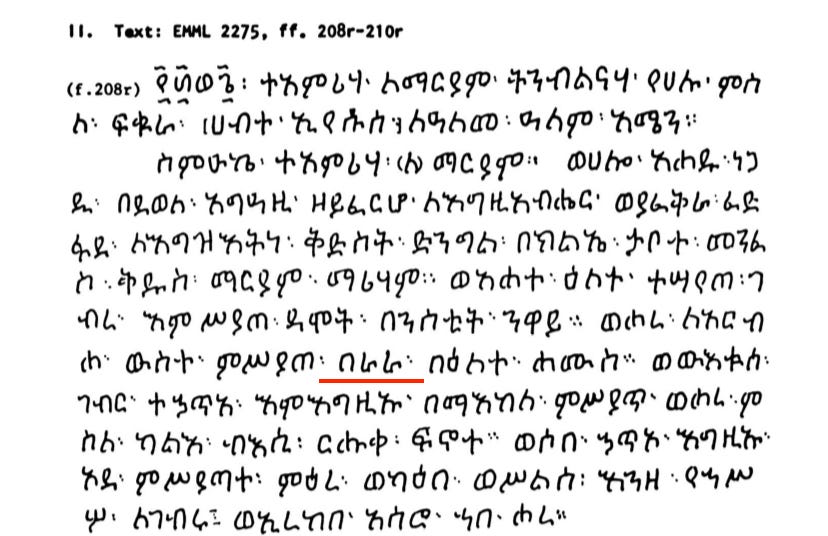
Barara is also mentioned in the 17th century Amharic-Ge’ez royal chronicle of the Amhara Emperor Yohannes I.
In foreign sources, Barara appears in the mid-15th century world map of Venetian cartographer Fra Mauro.
There is indeed other archaeological evidence of this city’s existence. Ruins of ancient palaces, towers, and more are found in and around Addis Ababa.
From the time of Emperor Yekuno Amlak, who restored the Solomonic Dynasty around 1270, the capital of the Ethiopian Empire was usually Tegulet in Shewa.
We have confirmation from the early 14th century Amharic war poems dedicated to Emperor Amde Tsion I, which describe Tegulet as the launching point of the emperor’s reconquests of rebellious Adal and Ifat.
Arab historians like Al-Maqrizi and Al-Umari, writing toward the end of the 14th century, further confirm this.
They and other Muslims referred to Tegulet as “Marade.”
Strangely, Mauro’s map was produced during the reign of Emperor Zara Yaqob (1434-68). Yet, their own chronicle sets Debre Berhan (another place in Shewa) as the royal capital, not Barara.1
Records detailing the lives of those emperors before Zara Yaqob—like Yeshaq I (1414-28), Andreyas (1429-30), and Tekle Mariam (1430-33)—also do not mention Barara.
Together with the fact that virtually all mentions of Tegulet as the royal capital disappear at the turn of the 14th century, Barara must have become the Ethiopian capital no sooner or later than when Emperor Dawit I (1382-1413) ascended the throne. Find part of their family tree below.
The conclusion above is the only one consistent with traditional Ethiopian sources.
Nevertheless, successive emperors like Lebne Dengel (“‘heart’ or ‘incense’ of the Virgin”) may have completed or added to earlier structures there. Evidence of this comes from a heart-shaped ornament found at the historic site of Barara, which may have been Emperor Lebne Dengel’s personal emblem.
Although some have suggested that Emperor Menelik II built the castle above, archaeologists have confirmed extensive damage to the structure only three years after Addis Ababa’s founding. While they had plans to build a palace near Entoto, the emperor never followed through with them. And due to the presence of forts and other medieval structures, a 19th century dating becomes even less probable.
So what ever happened to Barara? Sadly, much of it was destroyed by the Harla ruler Gragn Ahmed of Adal, a Muslim kingdom in East Ethiopia, during the civil war of the 16th century.2 The chaotic Kenya-Ethiopia Oromo migrations of the period may have contributed to its decline as well.3
Thus, today we are left with few but impressive vestiges of this ancient Ethiopian city.
And regardless of which Amhara emperor established Barara, one can rest assured that there has never been, and will never be, a city called “Finfinne.”
Thanks for reading! If you appreciate my work, consider supporting me at any of the links below. Until next time,
- EM
Haile, Getachew. (1996). “Deqiqe Estifanos: Behig Amlak.”
Huntingford, G.W.B. (1991). “The Historical Geography of Ethiopia, from the First Century A.D. to 1704.” Journal of Ethiopian Studies, pp. 119-20. Review by Taddesse Tamrat.
Lewis, Herbert S. (1966). “The Origins of the Galla and Somali.” Journal of African History, pp. 34-35.






